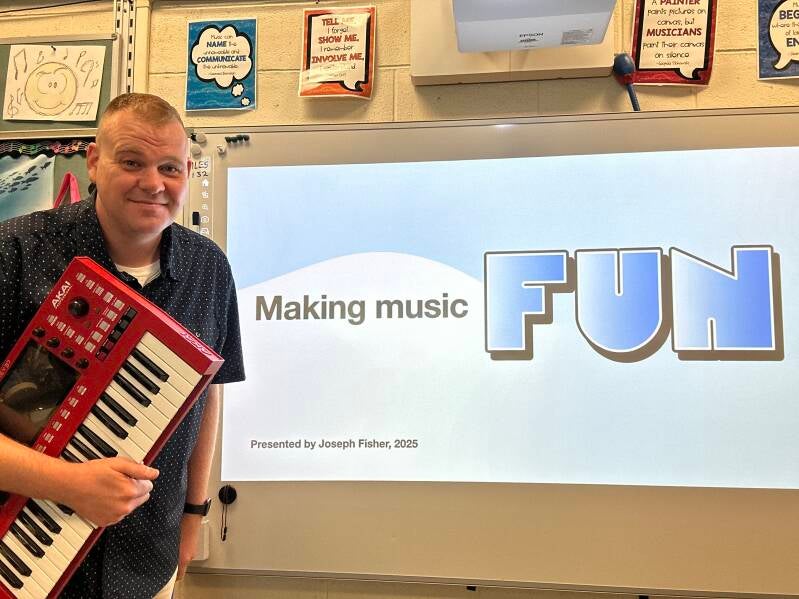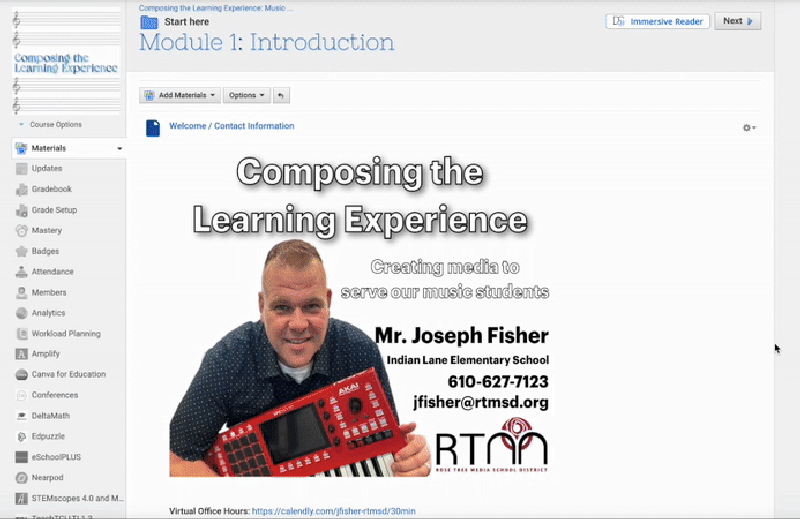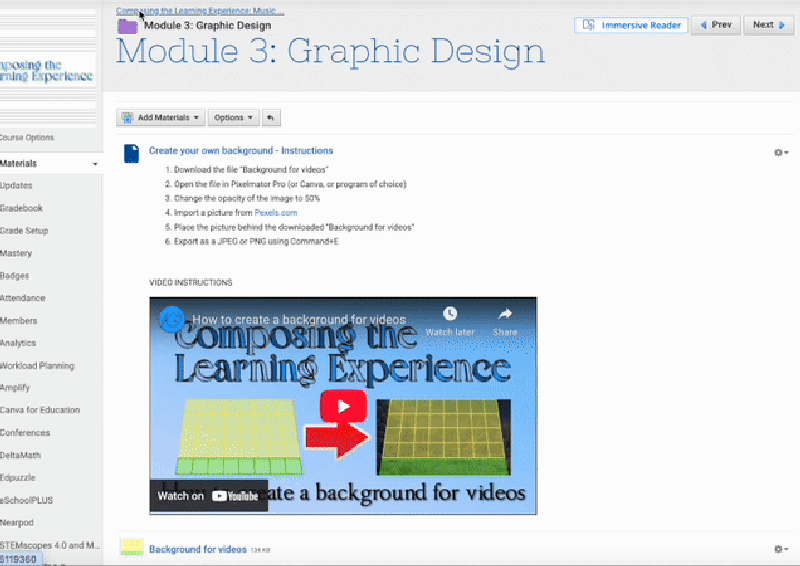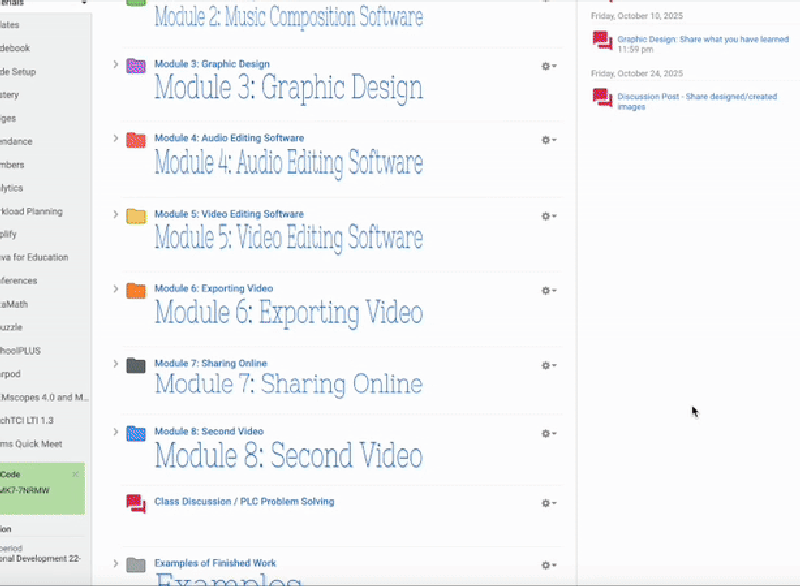Connecting and Communicating Your Ideas
July 24, 2025
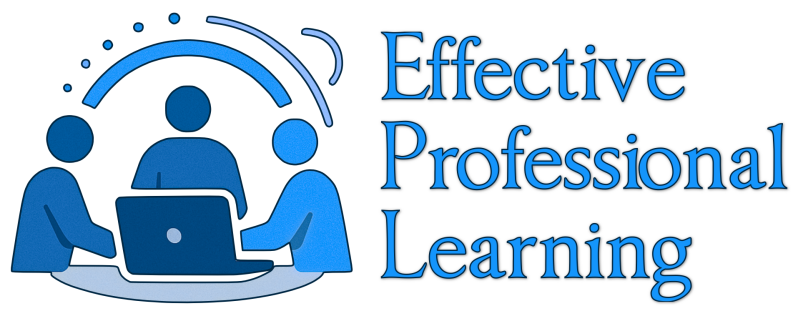
The Yearn to Learn
A Call to Action for the Rose Tree Media School District Professional Development
To engage in effective professional learning for the RTMSD music department, the proposal to change the delivery method is made to the Professional Development Council. In this Call to Action, teachers and administrators will participate in conversations as they rethink ways to engage our faculty in meaningful learning experiences. Redefined by this presentation, learning is ongoing, not a one-time event or workshop as with previous offerings (McCammon, 2013). Implementing a plan, fostering collaboration and reflection, and improving the skills that are gained are all parts of this new experience. Together, the teachers at Rose Tree Media can ignite change in the practice of professional learning as we seek to differentiate instruction for educators (TNTP, 2015).
A Blueprint for Effective Professional Learning
Presenting the Alternate Professional Learning
The design of the specific learning experience, crafted for the music faculty, outlines the planning process to create an alternative professional learning. Following a method that begins with student growth based on authentic learning experiences, this blueprint builds on the district's curriculum and the state and national standards for music education (Harapnuik, 2024). Composing the Learning Experience is professional learning that allows teachers to decide what content to create using a variety of methods shared through video instruction, collaboration, and continued instructional support (Harapnuik, 2019). The learning experience was sketched using Gagne's Nine Events of Instruction (Athuraliya, 2024). From this instructional tool, the course was designed with an Overarching Course Goal (BHAG) and Fink's Three Column Table (Harapnuik, 2016).
In addition to collaboration as a PLC, the faculty who will participate in this course will partner with the cohort of music educators who teach similar content and grade levels. With a background in video production for music education, Joseph Fisher will lead the course along with the support of administration, district instructional coaches, and the district music coordinator.
Overarching Course Goal (BHAG)
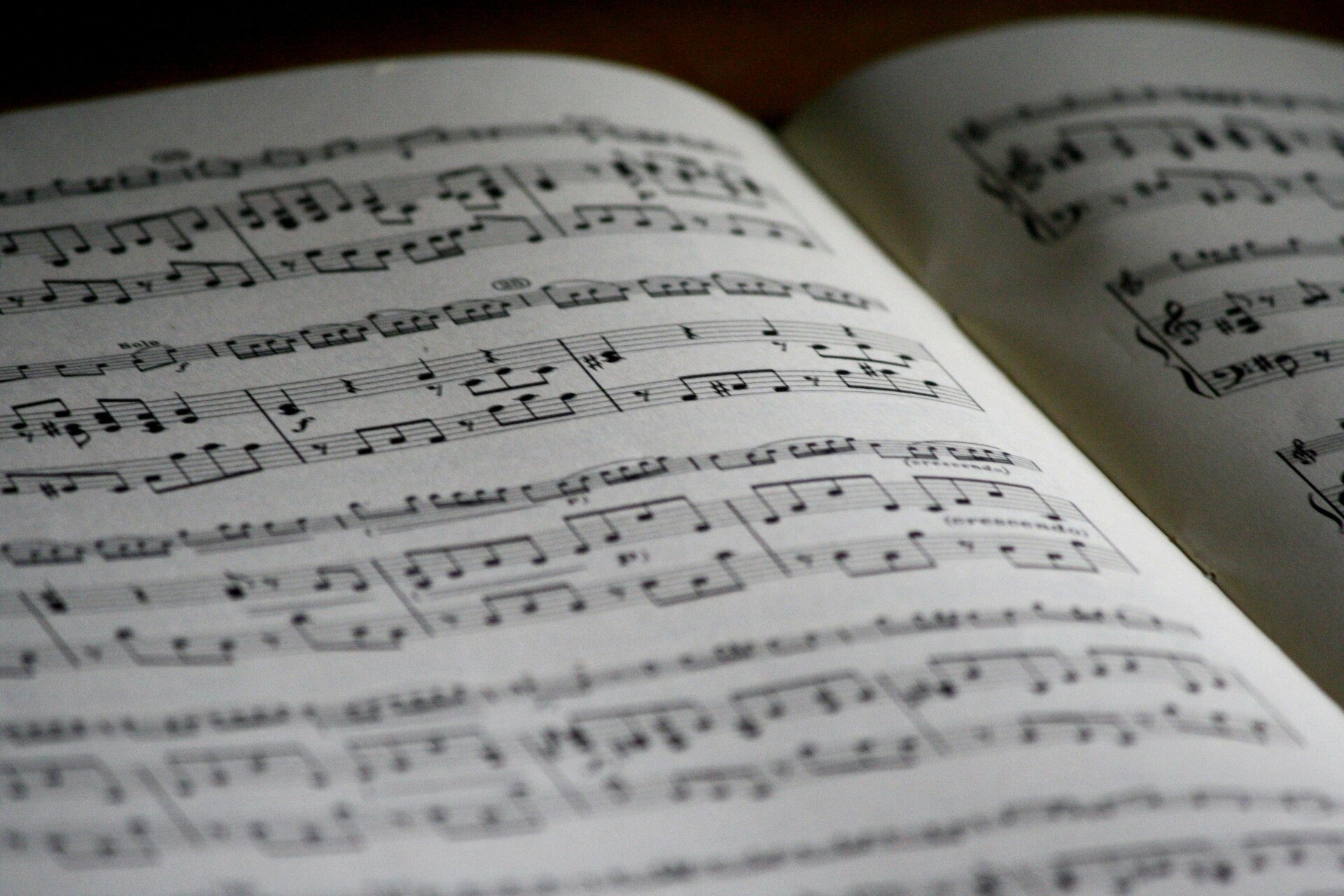

After engaging stakeholders to trust the findings of Allison Gulamhussein (2013), the professional learning experience has been designed to be presented through a blended model of instruction.
The Professional Learning At-A-Glance
Composing the Learning Experience will be presented to teachers as a way to meet the needs of our students by connecting to their musical interests, previously learned skills, and their social and emotional needs. Delivered through blended instruction, the district's music faculty will meet in person on the first inservice day of the school year. The professional learning will begin with a call to action that will include a collaborative session evaluating the district's needs and presenting solutions through shared media created by the team. Following Gulamhussein's (2013) five principles of effective professional development, the experience will be tailored to engage the music faculty.
The complete schedule, shared as a PDF and posted in Schoology will propose reasonable deadlines for teachers to learn, apply, and create media resources. Throughout the proposed three-year plan, teachers will collaborate as they develop skills in notation, graphic design, audio editing, and video editing. Video tutorials, discussion boards, and sharing resources in the district's LMS will allow the in-person time to be utilized for questions, collaboration, and modeling (Camp Stomping Ground, 2015).
Professional Learning Schedule
| Timeline | Learning Module |
|---|---|
| Aug. 20 - Aug. 29, 2025 | Module 1: Introduction to Video Pedagogy |
| Sept. 2 - Sept. 30, 2025 | Module 2:Writing/Republishing Sheet Music |
| Oct. 1 - Nov. 3, 2025 | Module 3: Graphic Design for Music Teachers |
| Nov. 4 - Nov. 25, 2025 | Module 4: Audio Recording Techniques & Tools |
| Dec. 1 - Jan. 9, 2026 | Module 5: Video Creation - Combining Audio and Images |
| Jan. 12 - Feb. 20, 2026 | Module 6: Video Creation - Adding Movement and Exporting |
| Feb. 23 - Apr. 10, 2026 | Module 7: Webpage Development |
| Apr. 20 - Jun. 6, 2026 | Module 8: Second Video |
| Aug. - Dec. 2026 | Module 9: Apple Motion |
| Jan. - Mar. 2027 | Module 10: Connections with Popular Music |
| Apr. - Jun. 2027 | Module 11: Using Schoology with Video |
| Aug. - Dec. 2027 | Module 12: Video Assessments |
| Jan. - Mar. 2028 | Module 13: Building the Content Library |
| Apr. - Jun. 2028 | Module 14: Future Considerations |

Module 1: Start here (Introduction to PL)
To emphasize the importance of the in-person learning presented through the first module, it has been presented as a Start Here page. While transforming the professional learning experience, we must still adhere to inservice schedule, defined by the district and state. The professional learning will begin in-person with a call to action, followed by a collaborative session allowing teachers to discuss the benefits of mixed media and to express potential hurdles. The kickoff to learning will include in-person modeling of creating a video that students have already used to improve skills, as well as examples of student participation in the media. The LMS module will provide contact information, notes from the meeting, an outline of the schedule, links, and information about the required applications.
Module 2: Music Composition Software
The second module will begin the process of creating media for students. Teachers will choose a song or piece of music that will benefit their classroom and engage learners, then input the song into the program MuseScore. Teachers will be permitted to utilize other music notation programs; however, the PL will offer specific support for this application. Two weeks into the module, teachers are to reply on a discussion board sharing what they have learned so far. At the conclusion, teachers are to post their created PDFs and MIDI files on another discussion board. Commenting and sharing in the discussion will be necessary to build the PLC.
Module 3: Graphic Design
The third module will educate teachers on using a graphic design application. As with module 2, faculty will be encouraged to utilize the district-provided Pixelmator Pro; however, they will also be permitted to use alternate applications that they may be more familiar with. Teachers will be tasked with creating and altering images that may be used in their media project. As with future modules, there will be two discussion boards, and teachers will share their findings and progress through this medium.
Future Modules
Placeholders have been created to organize the upcoming coursework. As in previous modules, each unit will include written instructions, video tutorials, resources, and discussion boards. At the bottom of the course, the team can access a class discussion for the professional learning community to share and provide additional feedback. It will also include examples of finished mixed media and links to the UbD curriculum documents.


With the skills gained in this professional learning, music teachers will be equipped to develop numerous resources for their classrooms as well as their school community. Although the mastery of audio and video applications may seem daunting, the plan is constructed to learn in a community with the support of the other members of the cohort. Together, this experience will strengthen the district's system of teaching music as we construct an environment of collaboration, share knowledge, and build skills to engage our students. Above all, creating a mixed media library tailored to the needs of our students will address and strengthen the vertical articulation of music education in our district. Acknowledging the importance of a growth mindset, giving choice, ownership, and voice to teachers through this authentic learning experience will empower them to lead a lifetime of learning (Harapnuik, 2018).
References
Athuraliya, A. (2024, December 25). Top 7 instructional Design models to create Effective Learning Material. Creately Blog. https://creately.com/blog/diagrams/instructional-design-models-process/
Camp Stomping Ground. (2015, December 4). Peter Gray - Self-Directed Learning Fundamentals [Video]. YouTube. https://www.youtube.com/watch?v=YoE480mzrk0
Gulamhussein, A. (2013). Teaching the Teachers: Effective Professional Development in an Era of High Stakes Accountability. Center for Public Education.
Harapnuik. D. (2016). Why you need a BHAG to design learning environments. It’s About Learning. https://www.harapnuik.org/?p=6414
Harapnuik. D. (2018). COVA. It’s About Learning. https://www.harapnuik.org/?page_id=6991
Harapnuik. D. (2019). Competency-based vs Outcomes-based education. It’s About Learning. https://www.harapnuik.org/?p=7889
Harapnuik. D. (2020). Why I don’t use checklists, progress bars & other activity monitors. It’s About Learning. https://www.harapnuik.org/?p=8314
Harapnuik. D. (2024). EdTech Tips. It’s About Learning. https://www.harapnuik.org/?page_id=9165
Pixabay (2016). Printed Musical Note Page [Online Image]. Pexels. https://www.pexels.com/photo/printed-musical-note-page-164821/
Standards for Professional Learning: Quick Reference Guide. (2019). Retrieved from https://learningforward.org/wp-content/uploads/2019/09/standards-reference-guide.pdf
TNTP. (2015). The mirage: Confronting the hard truth about our quest for teacher development. http://tntp.org/publications/view/evaluation-and-development/the-mirage-confronting-the-truth-about-our-quest-for-teacher-development
Yang, S. (2025, February 24). How to Use MuseScore (with Pictures) - wikiHow. wikiHow. https://www.wikihow.com/Use-MuseScore



